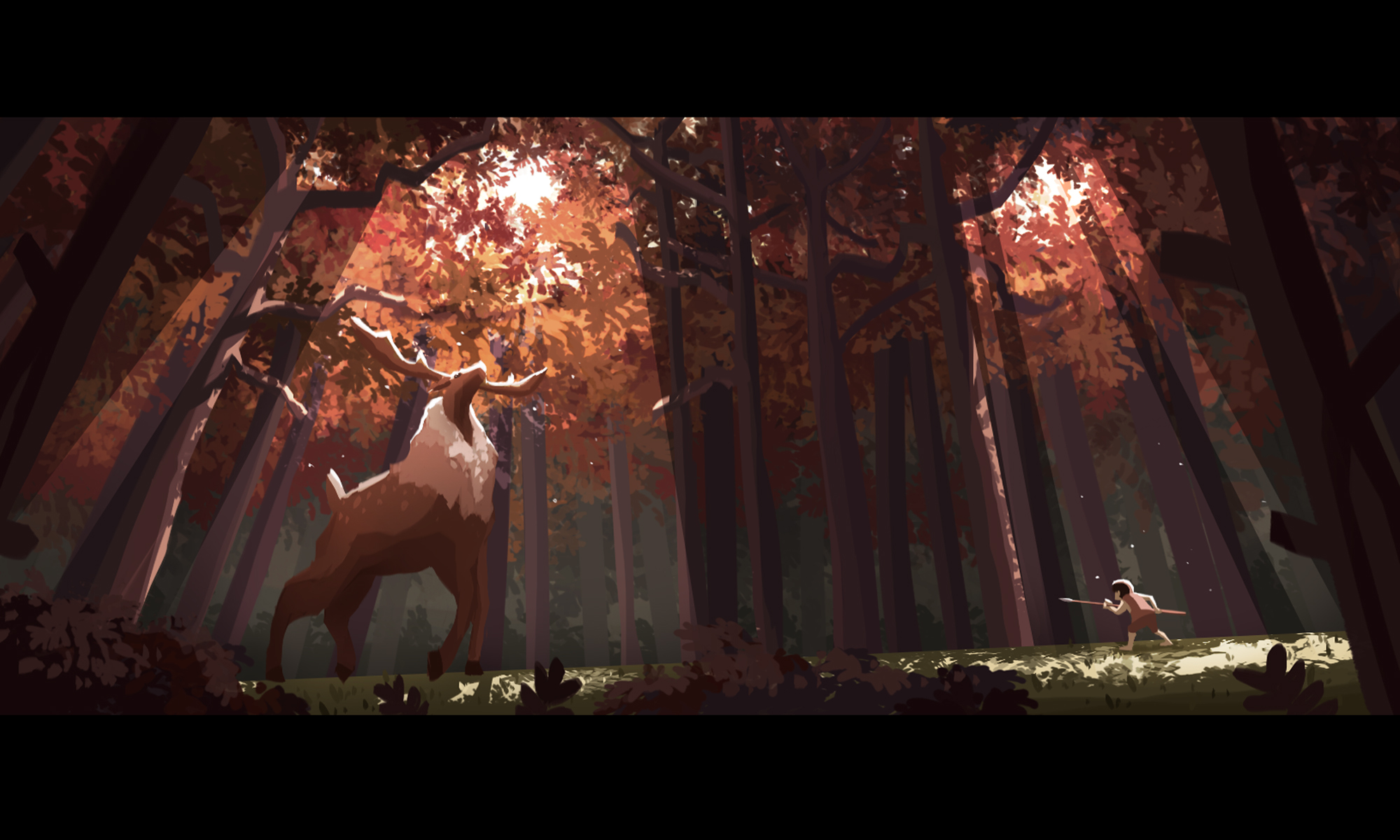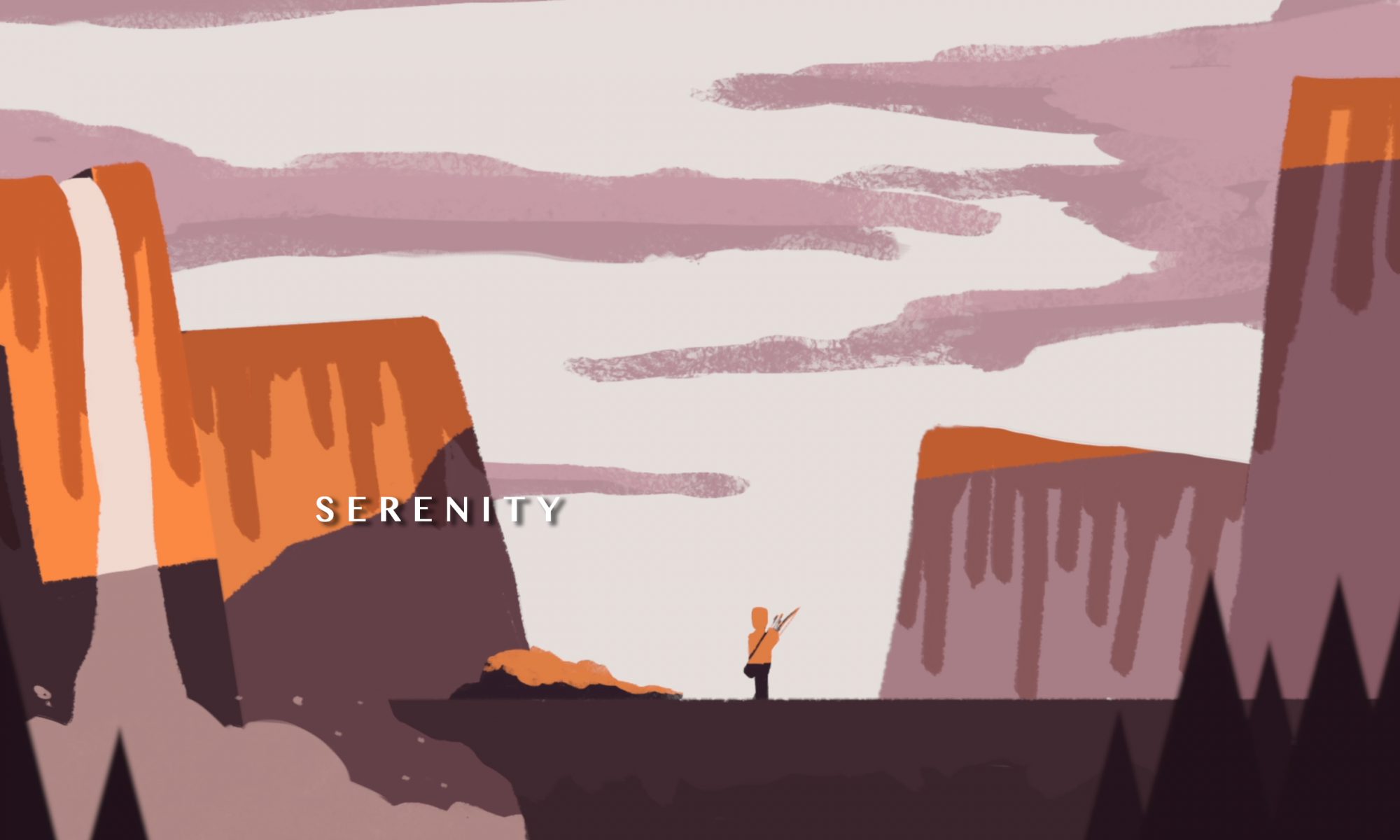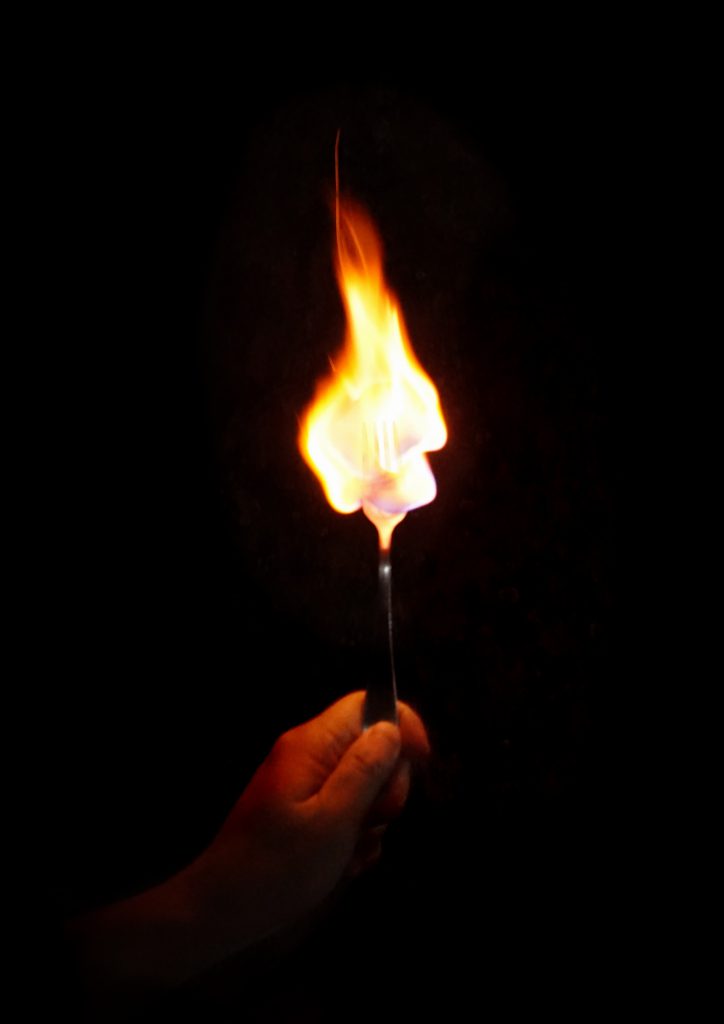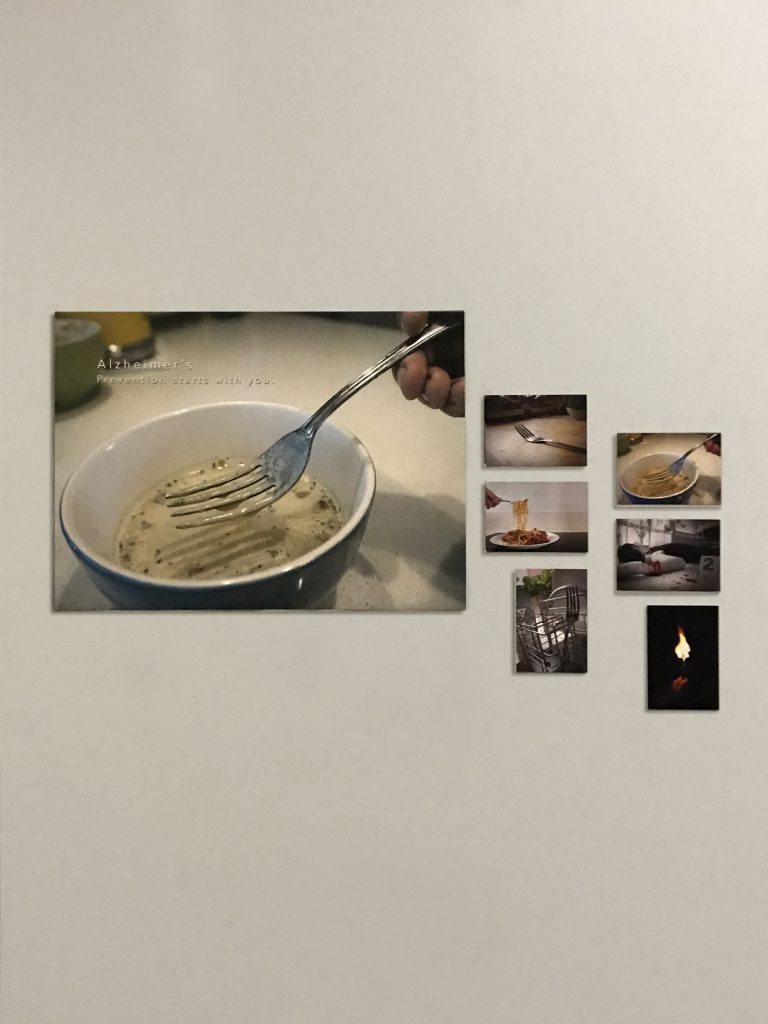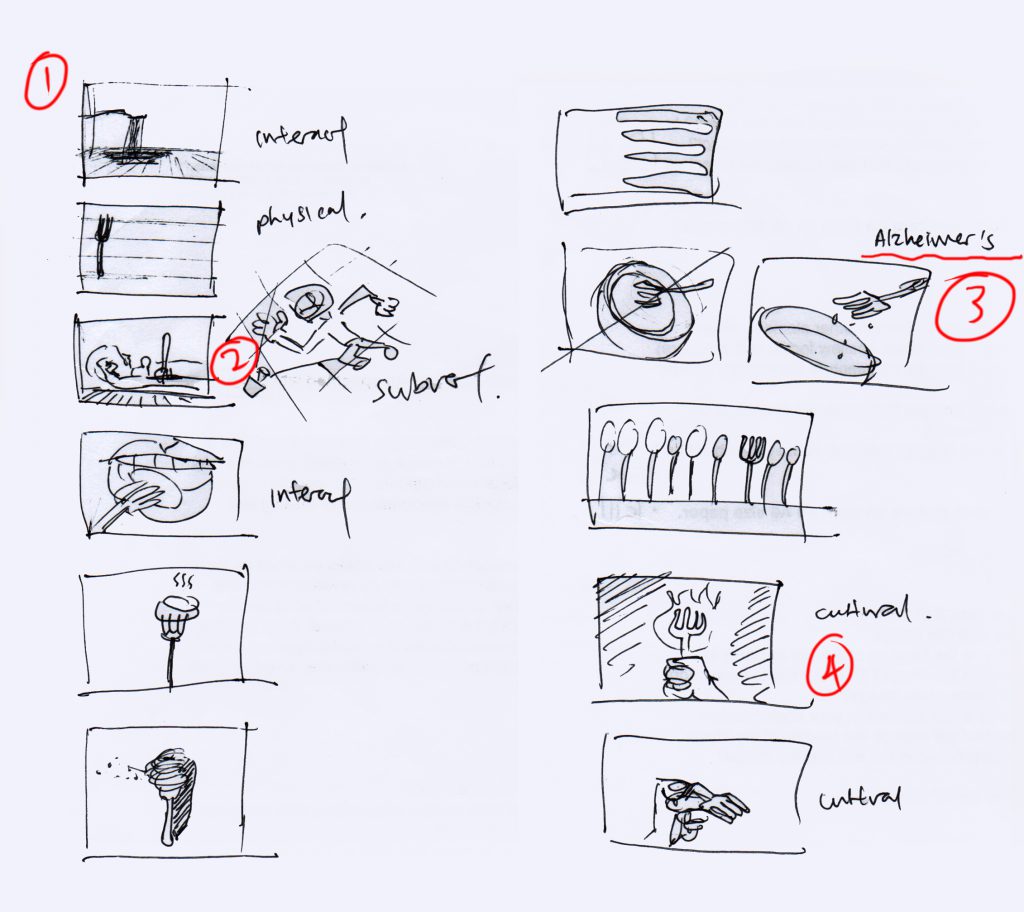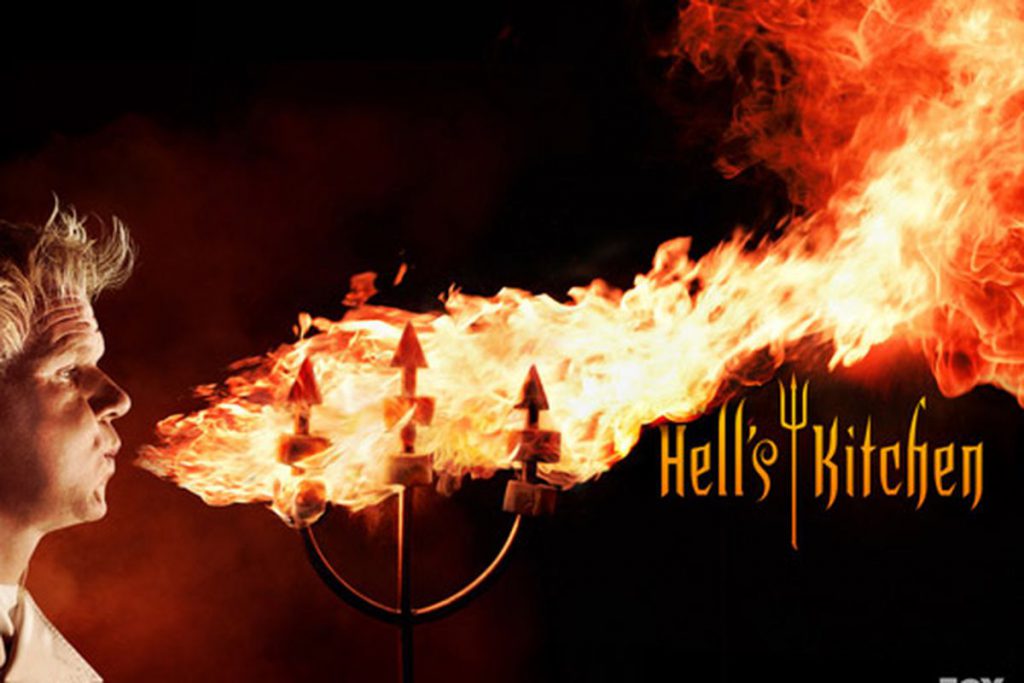For this project, we were tasked to study how rhythm can be achieved through the use of exploring composition, transformation in a visual sequence, how sound and image can reinforce or contradict each other, and explore literal and metaphorical use of sound with image.
Serenity
This short video is about a ninja who has found himself in a secluded mountainous area, basking in the calmness and serenity of the environment until a crow disrupts the peace…
Task 1 & 2 – Visual Sequence & Soundscape
30 Places I’ve never been
- Open Sea
- Haunted house
- Cruise
- Mountains Area
- Space
- North Korea
- Volcano
- Desert
- Girl’s Toilet
- Dinosaur Era
- Graveyard
- Farm
- Canyon
- Disneyland
- Warzone
- Minefield
- Whitehouse
- Seabed
- Observatory
- Submarine
- Power plant
- Animal shelter
- Castle
- Hollywood
- Bollywood
- New York City
- Circus
- Villa
- Beach house
- Azkaban
30 Sounds I would hear at selected location (Mountainous area)
- Wind howling
- Waterfall
- Birds
- Trees swaying
- Bees
- Thunder
- Avalanche
- Bears
- Leopards
- Grass swaying
- Hikers
- Campfire
- Crickets
- Goats
- Eagles
- Wolves
- Airplane flying by
- Airplane crashing
- Nearby village
- Rain
- Running water
- Fishes in ponds
- David Attenborough narrating for National Geographic
- Volcanic eruptions
- Man-made explosions
- Trees burning
- Trees falling
- Someone shouting, echoes
- Gun shots
- Dragons
Step 1: Rough Storyboards
My first step of pre-production was to draft the rough storyboards, where I planned the camera angles, composition of elements, and sequence of events for the entire video.
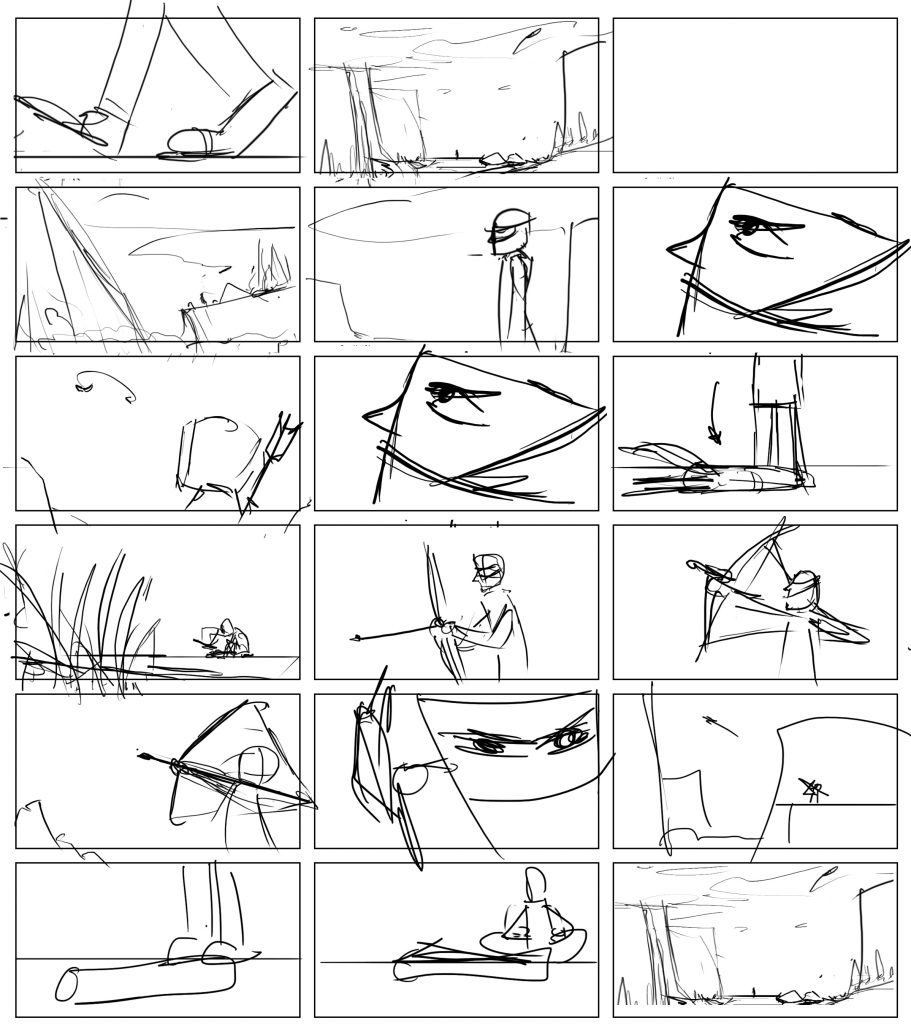
Step 2: Soundscape
Based on my storyboards, I used the internet to find the sounds that would appear in each shot. I also recorded a few of my own sounds for use in my Hi-Fi storyboard and final video.
Sounds from free online sources:
Sounds recorded using the Zoom Recorder:
Underlying Piano Melody (Non-diegetic sounds)
I also created some simple piano melodies to help bring out the emotion of the character (Applied in Final Video, after Hi-Fi consultation).
Step 3: Low Fidelity Animatics
I then converted my storyboards into an animatic, along with the soundscape. I also used this stage to plan out the duration for each shot.
Step 4: High Fidelity Storyboard
The final step of pre-production was adding the colours, reflecting the overall mood of the film. Sounds were also recorded and finalised to be added into the final video.
The initial walking scene was removed as I wanted the first shot to be more impactful, i.e. dropping the audience right into the establishing shot of the vast mountainous area.
Task 3 – Final Video
Once again, here is my final video entitled Serenity.
Breakdown
Mood graph for my video. Character is at a location, encounters a problem, solves the problem, and everything goes back to normal.
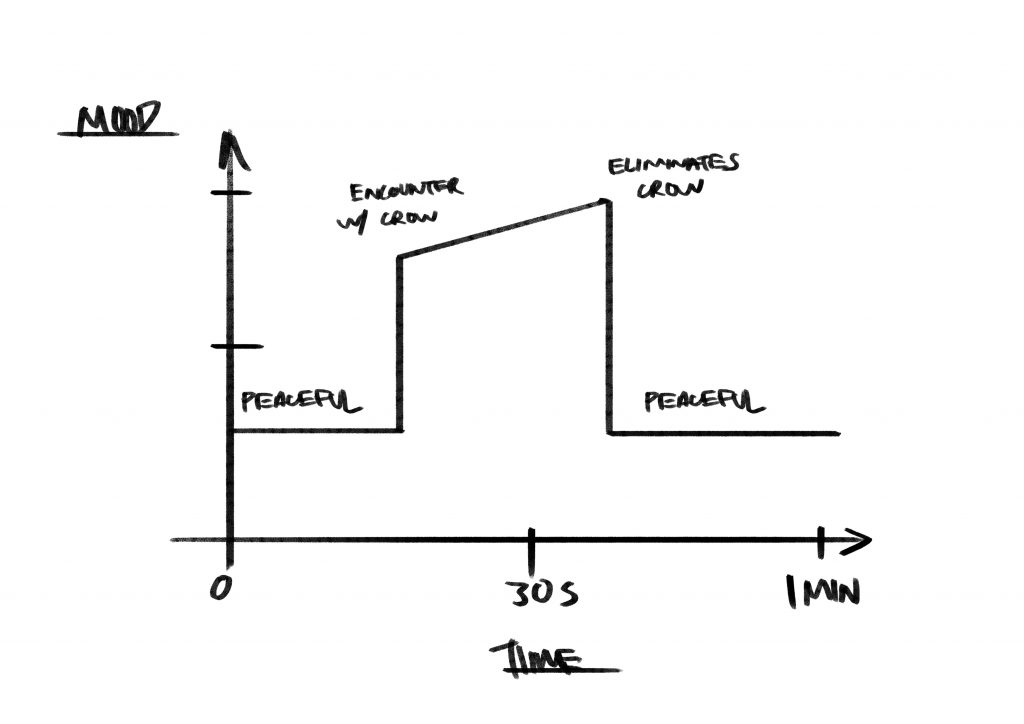
Visuals
A sunset theme of orange and purple was used to evoke a sense of serenity, it also signifies the peacefulness at the end of a hard day’s work, or in this case, maybe the ninja had just finished assassinating someone and is taking a break in the mountains.
Soundscape
There are three main parts for the soundscape in my final video: The ambience, the sounds created by the different elements in the video, and the underlying piano melody.
Ambience
The waterfall and howling wind are the two sounds which can be heard throughout the entire video. It immerses the audience into the location, as if they were there themselves. The intensity of the sound of the waterfall is manipulated according to the scene, i.e. the closer it is to the ‘camera’, the louder it will be.
Sounds of elements
Due to the constant sounds of the ambience, the sounds of the other elements in the video had to be loud enough to be heard, but not so loud as to make it unnatural.
Underlying piano melody
As mentioned earlier, the purpose of the piano melody is to bring out the character’s state of mind and change of emotion throughout the video. The main idea was to have a serene melody for when he is calm, and an off-key note when the crow disrupts the peace. A repetition of notes is used for the scene where he takes aim at the crow with his bow and arrow, which creates tension.
Research and References
I was heavily inspired by the short film ‘Palmipedarium’ by Jérémy Clapin. The film has great ambience and subtle sounds in a relatively quiet background which really immerses the audience into the film. It also has brief moments of an underlying melody which brings out the characters’ state of mind and emotions. There is no dialogue so all the attention is really on the characters’ performance and soundscape.
Lastly, the artworks of Pascal Campion has always been an inspiration for many of my illustration based projects. His use of colours and ability to tell a story through an image is breathtaking.
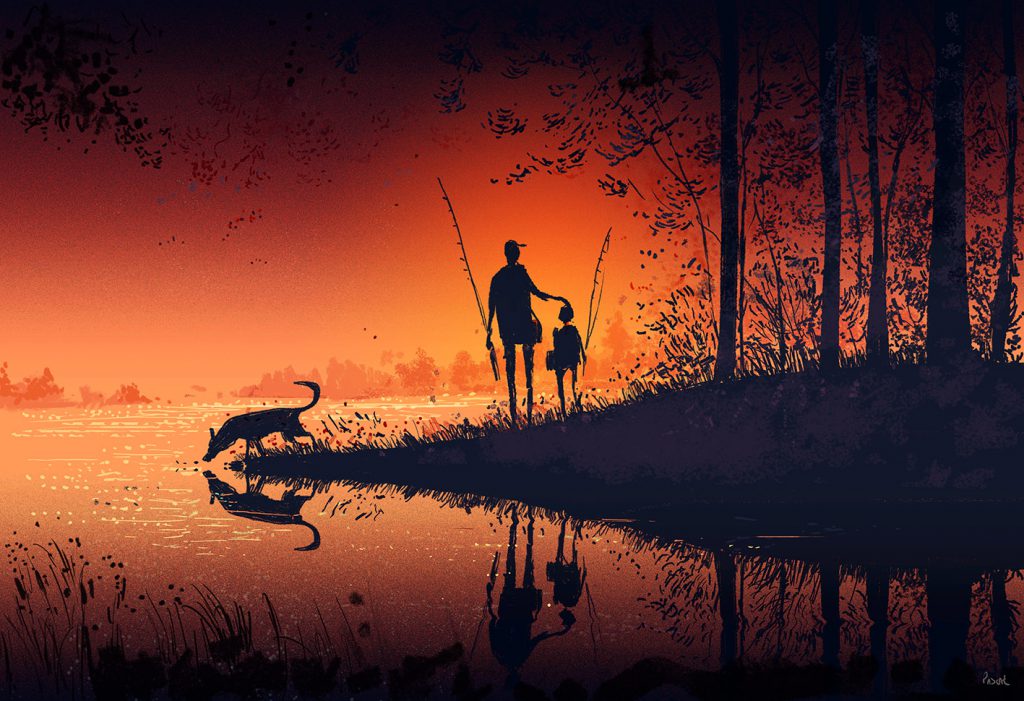

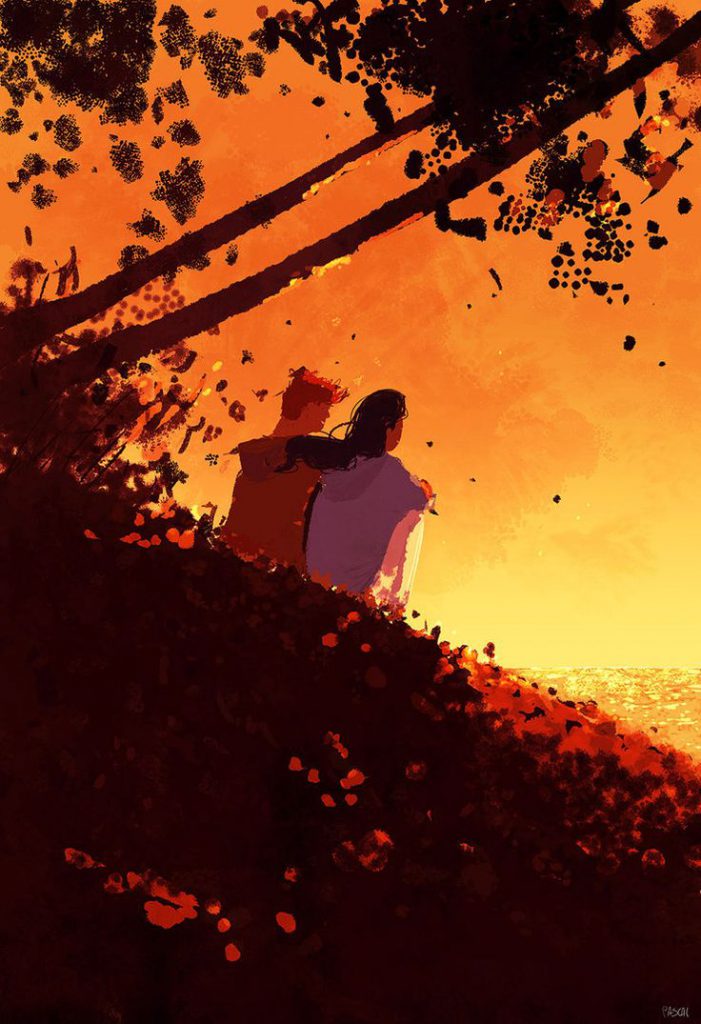
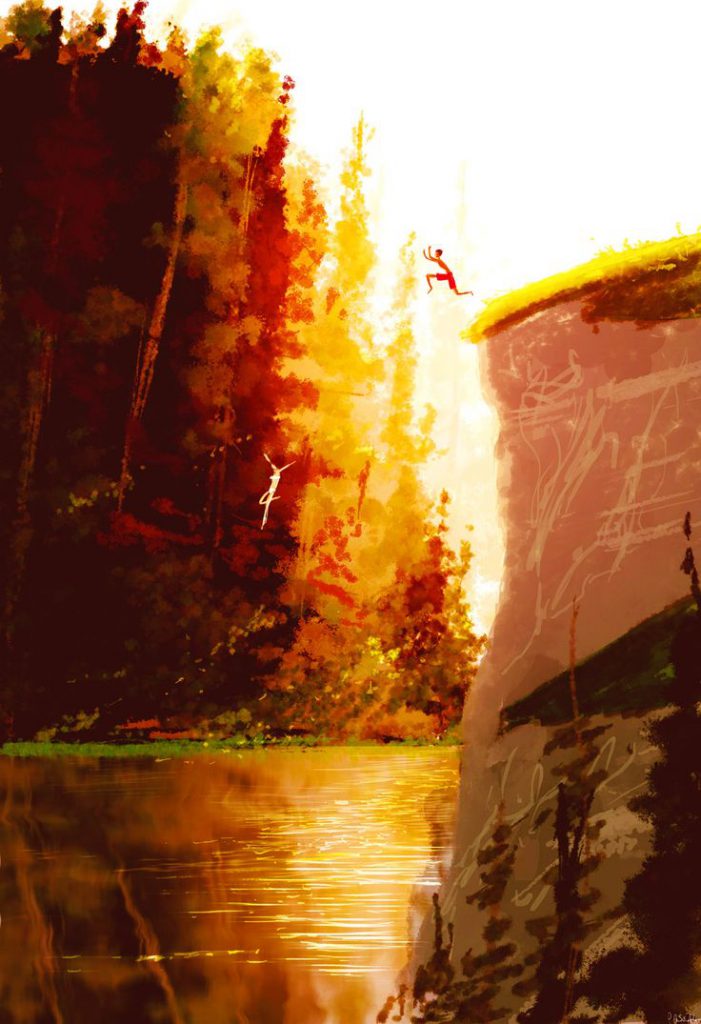
Conclusion
This project has been fun as I was able to incorporate what I’ve studied when pursuing my diploma in Animation, going through the pre-production process of storyboarding and animatics right down to the final video, although it was just until the animatics part. It has allowed me to think more deeply on how important sound is and how it affects visuals.
Classroom Exercise – Analysis on Rhythm, Movement, Causality and Duration
rhythm – regularity or irregularity? any repetition? movement – successional or oppositional or stillness? is there presence of attack, sustain and decay? causality – clear expectations or unexpected? easy to track or not easy to track? duration – too long or too short? length of time effective?
Rhythm – A regularised repeating of movement or sound
There is the continuous soundscape of the ambience, i.e. the sound of the waterfall and the howling wind, creating a sense of calmness. There is also a continuous use of a consistent colour scheme of orange of purple throughout the film.
Movement – A shift or variation in the location of an object, light or sound
There are a few moments of successional movement, where the audience is attention is focused to where the main character is looking and pointing the bow and arrow at.
An example of movement can also be seen in the difference between the smooth-moving clouds and the staggered movement of other elements (animatic animation).
Causality – The principle that everything has a cause and effect
The story is relatively straight forward to understand and predict, when the crow interrupts the character’s calm state of mind, and when he puts down his bow and arrow, the audience can predict that he is going to shoot the crow down, an expected outcome. There is a brief moment of anticipation or suspense when the character eyes the crow while pointing the bow and arrow at it for a few seconds, taking aim at his target.
There is also a causality of sound when the character pulls the bow string back, the audience will expect the sound of the bow string snapping back and the sound of the arrow whizzing through the air.
Duration – Whether the time allocated to the work is effective
The video lasts 1 minute 7 seconds, which is around the required duration of the video in the project brief. The duration is also effective as it manages to illustrate the story being told. The story has a start, middle and end.
